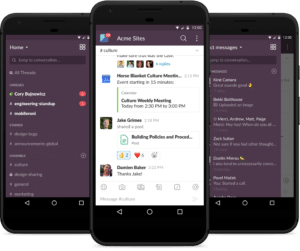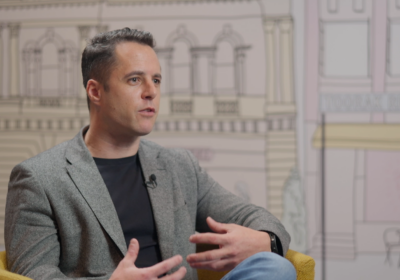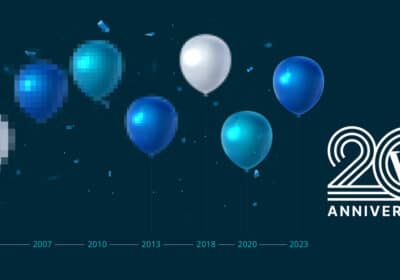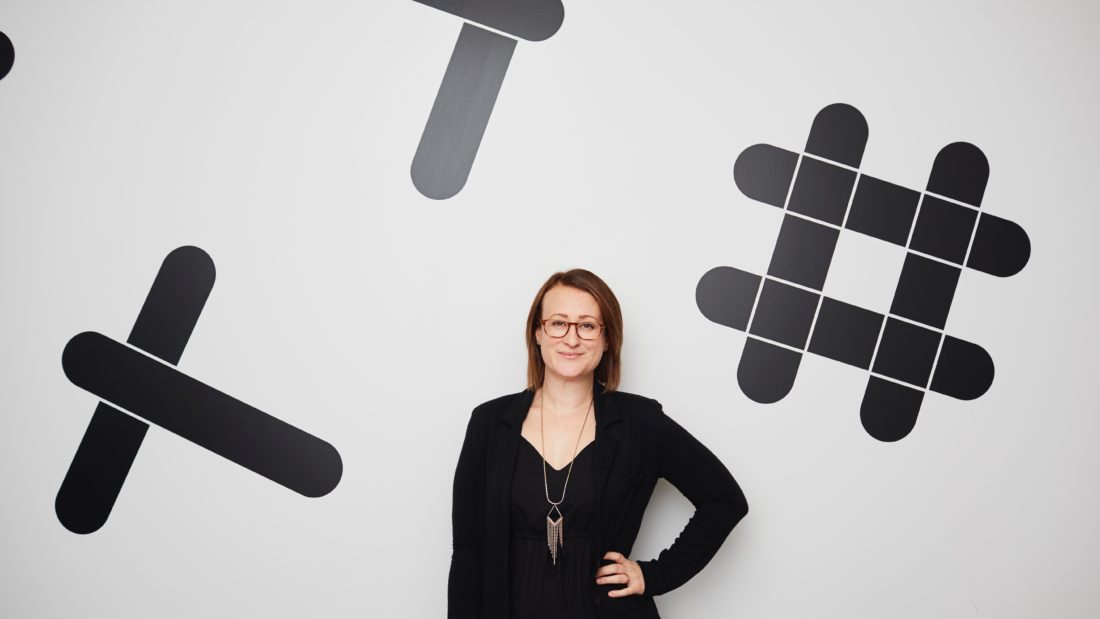Slack is not living up to its name. The workplace-messaging company has made several acquisitions this year, and just recently signed a deal with enterprise software company Atlassian that will make Slack its main messaging app. The five-year-old company has grown exponentially from its start as an in-house messaging app and now has nearly 8 million users across some 500,000 organizations.
But marketing to those organizations involves more than nurturing leads and demand generation efforts to IT departments, says Kelly Watkins, VP global marketing. When the company introduced the ability to show messages in a thread, it went back to all the users who had tweeted asking for that function, and thanked them individually for suggesting it.
“The nexus of power has shifted,” said Watkins.
Slack markets to enterprises, but it also builds its fandom among end users with events in the real world, such as its Best Monday Ever popups around the country, where it invites office workers to share coffee and donuts, get their headshots done and other treats.
“People inside of companies are demanding more ownership and advocacy over the tools they use on an everyday basis,” she said.
Watkins spoke to Velocitize about the strength of the voice of the customer, the new consumer journey in business-to-business marketing, and how the IT professional can still be the company hero.
You have mentioned the trends in B2B and the marketplace for enterprise tools are changing. What are the dynamics affecting them?
Watkins: At its most simple form it comes down to the fact that we have incredible software in our consumer lives. I think largely the rise of mobile has made this possible. Think about you know what you’re able to do on your phone—the apps that you have, the rich experiences that those provide. Those have really given everyone a taste of what great software is like and what great products are like.

You’re spending a considerable amount of time in the office, a considerable amount of time using software at work. Think of people’s expectations over the quality of tooling, and their experience of those tools. That’s dramatically shifted.
You have also spoken of the idea of the “consumerization of IT.” What does that do to the process of enterprise marketing, now there’s 20 people giving their opinions?
Watkins: IT still matters a great deal in B2B software. It’s an audience that we still care a great deal about at Slack.
The difference is how can IT be a hero today in a dynamic that is shifting and in a context that is shifting. For me it’s less that the audience no longer includes IT, but that it also includes many other folks inside of a company, particularly end users.
At work we want to do the best possible job. When you talk to people in IT, they really want to equip and enable teams to have the best tools to be able to work as efficiently and as effectively as possible.
When I think about our B2B approach, it’s much more about: How do we enable that conversation between end users—who we can reach and sort of create a space of advocacy for Slack—and IT—who are then responsible for and are hearing from their constituents about what they want to use—but making it successful inside of a business.
You’ve had experiential activations targeting employees, like Best Monday Ever. Does marketing now have to do experiential, high-touch events with the end user, as opposed to serving content to the IT department?

Watkins: I think it’s that people expect more and they expect to have more value delivered to them from brands and businesses. In a world many years ago it was possible to drive people through a growth funnel that started with content and then went to email nurture. I think more and more today, because people realize they have choice, they’re less likely to follow in on these efforts.
Not to say that they aren’t effective in any regard, because they think they still can be; but I think people are asking fundamentally different questions today. It’s less about: How do I get to this one piece of value from this business? It’s much more about: Why does it matter to me? It’s a higher burden of proof on businesses to deliver value much earlier in the customer journey than ever before.
So how do you the journey-map something like that? Do you have to be constantly listening on social media to what people are saying about your product?
Watkins: I think it’s a combination of things. Listening certainly matters a lot, but also engaging with people.
I think there’s been a huge shift in social media, where the expectation is less that it’s a megaphone for brands and businesses and much more that it’s an opportunity where people can engage with and discuss with businesses. Whether that’s filing a complaint or talking about something they don’t like or talking about something that they do, you have to be able to figure out how to respond to both.
It’s a fundamentally different way of imagining the customer journey when you start with the question “What value can we provide?” as opposed to “How quickly can we move people from one stage to another?”
Some players like Google and Amazon are omnipresent, but their customer service is never seen. Is this customer experience the new marketing? Is that where you really make your brand stand out?
Watkins: I think so. We’re experiencing a big shift from “brand” being a very narrowly-defined concept that’s just about identity or just about campaigns and advertising execution, to being about every experience that you offer as a business. That’s certainly how we think about it at Slack.

Amazon is a great case in point for the shift that we’re seeing. Look at how people are purchasing products on Amazon. The reviews of other people purchasing is a pretty critical factor in how people make decisions.
This voice of the customer or their ability to say “I had this experience” or “I didn’t have this experience” is a much more powerful factor than it’s ever been before. Which is why it’s so critical that no matter how people are engaging or interacting with your business, you’re the same kind of company. The approach is the same, the values are the same, and the way you treat people is the same.
What should we expect to see next from Slack? Is anything interesting coming up that we should be watching out for?
Watkins: We’re really continuing to focus on growing globally and that will continue to be a big push for us. We just started last year making the product available in multiple languages and will be continuing on that trajectory.
We really believe that there’s a huge market opportunity for Slack all over the world. We want to figure out how do we tell great stories to people who are in all sorts of markets and all sorts of business contexts.





Join the conversation